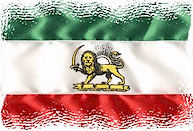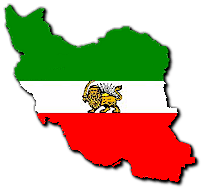Alliance For democracy In Iran
Please have a look at my other weblog, Iran Democracy - http://irandemocray.blogspot.com/
IMPERIAL EMBLEM

PERSIA
Shahanshah Aryameher
S U N OF P E R S I A
Iranian Freedom Fighters UNITE
Wednesday, August 15, 2007
Nearest mellon to ' Khar bezh E Mashadi ' growing in America since 1975
HOWELL -- The Howell melon will be the center of attention this weekend as festival-goers pay homage to the succulent cantaloupe.
Corn and soybeans might be the top crops grown in the county, but the Howell melon -- known for its sweeter and more favorable taste -- is cause for a four-day jubilation that draws as many as 60,000 visitors every third weekend in August. The fest promises live entertainment, kids activities, an art and crafts show, a farmers market and the Melon Tent, where the thin-skinned fruit will be in abundance for purchase alongside everything melon from shots to ice cream. The sandy, gravelly soil conditions in the county combined with local farmers' dedication to growing the fruit has kept the Howell Jaycees festival alive for 48 years, said Gretchen Voyle, horticulture educator for the Michigan State University Extension Office in Howell. "To be a melon grower is labor intensive. Farmers are exerting so much more energy because there are so many things they have to do and so much watching," Voyle said. "This is where art and science meet." Statewide about 600 acres of cantaloupe are planted annually, according to the Michigan Department of Agriculture, but Livingston produces the melon that draws all the attention. "Until you've tasted a Howell melon, you haven't tasted a good musk melon," Voyle said. "It's not a deal getting something from the store where the cantaloupe is picked green in California with hopes it will ripen in the truck along the way." It all begins in the greenhouse where the sprouts mature for transplant to the fields. The planting is done at several-week intervals so that the ripening period is stretched out from early August through Labor Day. In the spring, the plants live in a protective bubble, as hoops of vented plastic cover the delicate plants from evening frost, Voyle said. The melons are prone to insects and fungal problems, which can wipe out the crop rather quickly, she said. The hard work pays off with growers producing melons that are popular across the state. This year the hot, humid temperatures helped produce a bumper crop, said Gary Beal, son-in-law of Alan Dinkel, Sr., owner of 500-acre Dinkelville Farm on Shafer Road in Marion Township, about five miles outside of Howell.
The Dinkels are the largest producer of Howell Melons with about 15 acres dedicated to the fruit. Many of the melons found at Metro Detroit Meijer stores are Dinkelville melons. The Dinkelville Farm has been in existence for seven generations, about 150 years, although the family didn't begin growing the Howell melon until 1975. The Knight family of County Farm Road is one of the few original growers and reportedly the only one authorized to use the Howell Honey Sweet Melon stamp. In recent years, sprouting subdivisions and the time-consuming attention it takes to grow the fruit has decreased the number of growers, but not the festivities.
The Howell Jaycees festival begins 6:30 p.m. Thursday with the crowning of the Howell Melon Prince and Princess and continues throughout the weekend. The Howell Jaycees raise about $15,000 for community projects, such as the Back to School book bag and clothing program for underprivileged children, said Melissa Parker, local Jaycees' treasurer. You can reach Valerie Olander at (517) 552-5503 or http://www.detnews.com/apps/pbcs.dll/article?AID=/20070815/METRO/708150393/1003/mailto:volander@detnews.com.
PORTUGAL, THE PERSIAN GULF AND SAFAVID PERSIA : Conference
http://www.iranheritage.org/portugalconference/programme.htm
8-9 September 2007Freer & Sackler Galleries, Independence Avenue, Washington DCOn the 500th anniversary of Afonso de Albuquerque's attempts to take Hormuz in the Persian Gulf, this conference will focus on the contacts of the Portuguese with Safavid Persia and various aspects of their activities in the Persian Gulf basin.
Corn and soybeans might be the top crops grown in the county, but the Howell melon -- known for its sweeter and more favorable taste -- is cause for a four-day jubilation that draws as many as 60,000 visitors every third weekend in August. The fest promises live entertainment, kids activities, an art and crafts show, a farmers market and the Melon Tent, where the thin-skinned fruit will be in abundance for purchase alongside everything melon from shots to ice cream. The sandy, gravelly soil conditions in the county combined with local farmers' dedication to growing the fruit has kept the Howell Jaycees festival alive for 48 years, said Gretchen Voyle, horticulture educator for the Michigan State University Extension Office in Howell. "To be a melon grower is labor intensive. Farmers are exerting so much more energy because there are so many things they have to do and so much watching," Voyle said. "This is where art and science meet." Statewide about 600 acres of cantaloupe are planted annually, according to the Michigan Department of Agriculture, but Livingston produces the melon that draws all the attention. "Until you've tasted a Howell melon, you haven't tasted a good musk melon," Voyle said. "It's not a deal getting something from the store where the cantaloupe is picked green in California with hopes it will ripen in the truck along the way." It all begins in the greenhouse where the sprouts mature for transplant to the fields. The planting is done at several-week intervals so that the ripening period is stretched out from early August through Labor Day. In the spring, the plants live in a protective bubble, as hoops of vented plastic cover the delicate plants from evening frost, Voyle said. The melons are prone to insects and fungal problems, which can wipe out the crop rather quickly, she said. The hard work pays off with growers producing melons that are popular across the state. This year the hot, humid temperatures helped produce a bumper crop, said Gary Beal, son-in-law of Alan Dinkel, Sr., owner of 500-acre Dinkelville Farm on Shafer Road in Marion Township, about five miles outside of Howell.
The Dinkels are the largest producer of Howell Melons with about 15 acres dedicated to the fruit. Many of the melons found at Metro Detroit Meijer stores are Dinkelville melons. The Dinkelville Farm has been in existence for seven generations, about 150 years, although the family didn't begin growing the Howell melon until 1975. The Knight family of County Farm Road is one of the few original growers and reportedly the only one authorized to use the Howell Honey Sweet Melon stamp. In recent years, sprouting subdivisions and the time-consuming attention it takes to grow the fruit has decreased the number of growers, but not the festivities.
The Howell Jaycees festival begins 6:30 p.m. Thursday with the crowning of the Howell Melon Prince and Princess and continues throughout the weekend. The Howell Jaycees raise about $15,000 for community projects, such as the Back to School book bag and clothing program for underprivileged children, said Melissa Parker, local Jaycees' treasurer. You can reach Valerie Olander at (517) 552-5503 or http://www.detnews.com/apps/pbcs.dll/article?AID=/20070815/METRO/708150393/1003/mailto:volander@detnews.com.
PORTUGAL, THE PERSIAN GULF AND SAFAVID PERSIA : Conference
http://www.iranheritage.org/portugalconference/programme.htm
8-9 September 2007Freer & Sackler Galleries, Independence Avenue, Washington DCOn the 500th anniversary of Afonso de Albuquerque's attempts to take Hormuz in the Persian Gulf, this conference will focus on the contacts of the Portuguese with Safavid Persia and various aspects of their activities in the Persian Gulf basin.
Subscribe to:
Post Comments (Atom)
























 اخبار مربوط به زندانیان سیاسی و نقض حقوق بشر
اخبار مربوط به زندانیان سیاسی و نقض حقوق بشر

















 Tulips in Holland
Tulips in Holland












No comments:
Post a Comment